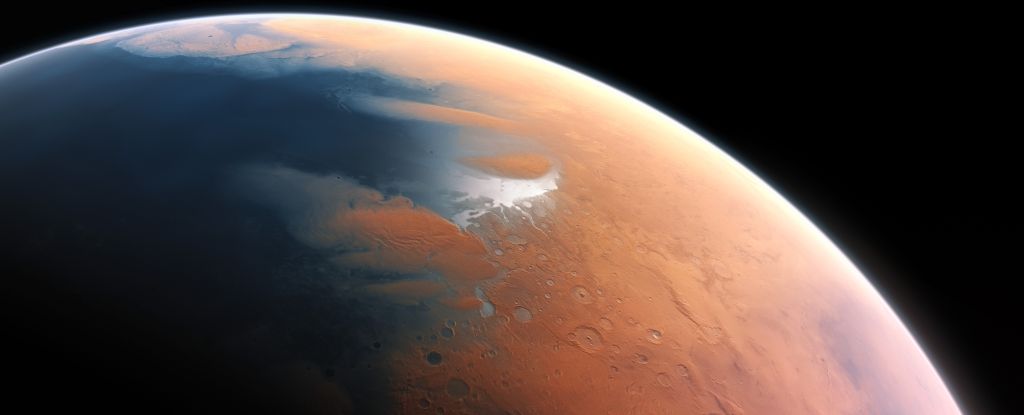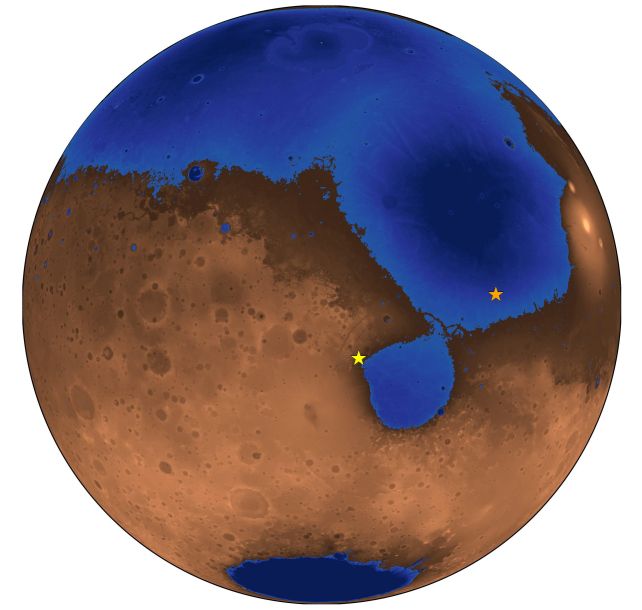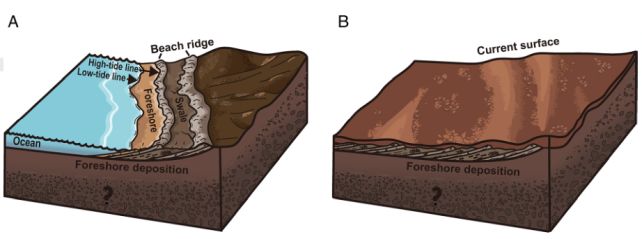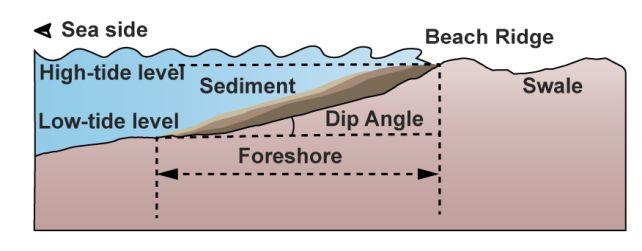
Mars – a planet characterized by its dusty, arid landscape – was once teeming with water, boasting not only lakes but vast oceans, as revealed by a recent study.
Utilizing ground-penetrating radar, scientists have uncovered underground formations indicative of beaches that existed on Mars around 4 billion years ago. This is among the most compelling evidence suggesting that the red planet was sufficiently moist to sustain a northern sea.
The research team has aptly named this ancient sea Deuteronilus.
“We are discovering areas on Mars that resemble prehistoric beaches and ancient river deltas,” remarks geologist Benjamin Cardenas from The Pennsylvania State University. “We have found indications of wind, waves, and abundant sand – essentially a classic beach getaway.”
The mystery surrounding Mars’ water history is significant. To the casual observer, it may seem as though the planet has never harbored liquid. Its famous global dust storms further reinforce this impression.
It’s tempting to think of Mars as an inhospitable desert; however, a growing body of evidence supports the idea that Mars not only had liquid water in the past but that it flowed in considerable quantities.
There is no doubt that water once existed on Mars, yet many questions remain unanswered. What was the volume of this water? When did it disappear? Where did it go, and how?
“Oceans play crucial roles on planets. They significantly impact climate, sculpt planetary surfaces, and create potentially habitable zones,” states geophysicist Michael Manga from the University of California, Berkeley. “This drives the ongoing ‘follow the water’ initiative in Mars exploration. Personally, I find it thrilling to delve below the surface in locations where we believe an ocean could have existed and uncover what we suspect are beach deposits.”
Utilizing data from the Chinese National Space Administration’s Zhurong Mars rover, an international team of researchers led by engineer Jianhui Li and geologist Hai Liu from Guangzhou University has shed light on how much water could have filled these ancient bodies, enough to form an ocean.

As Zhurong traversed the Utopia Planitia region, it used ground-penetrating radar (GPR) to analyze materials up to 80 meters (about 260 feet) beneath the Martian surface.
This innovative technology emits radio waves into the ground: when these waves hit materials with different densities, they return in distinctive patterns, allowing scientists to create a detailed 3D map of subsurface structures.
A previous study utilizing Zhurong’s data hinted at a shoreline, though this interpretation lacked confirmation. Recent GPR data has unveiled significant layers of deposits along Zhurong’s path, sloping upward toward the hypothetical shoreline at a 15-degree angle, mirroring ancient shorelines found on Earth.
“These formations are neither sand dunes nor impact craters nor lava flows. This led us to consider the possibility of oceans,” Manga explains.
“The alignment of these features corresponds to where an old shoreline would likely have been, with the correct orientation and slope to suggest a prolonged ocean that allowed beach-like deposits to form.”

These findings suggest the presence of a significant liquid ocean, with rivers delivering sediment and waves and tides at work. Moreover, it indicates that Mars maintained a water cycle for millions of years—the duration necessary for such deposits to form, akin to processes seen on Earth, and distinctly different from what occurs at lake margins.
“The larger the water body, the more pronounced the tides can be. Consequently, there’s more opportunity for wind to create sizable waves. Greater tides and waves contribute to beach formation,” Manga told ScienceAlert.
While Mars lacks Earth’s Moon, which has a substantial effect on our tides, the Sun does influence ocean tides on Earth. Although Martian tides would likely differ from what we experience, they undoubtedly existed. Furthermore, surface waves generated by wind, which are quite common on Mars, would also be present.
This latest finding strengthens the case for suggesting that ancient Mars possessed conditions conducive to life, highlighting areas to search for markers of past life if equipped with the necessary tools.

“Coastal regions, where water, land, and atmosphere converge, represent potentially habitable settings. Understanding where and when these environments existed equips us to guide our exploration and interpret satellite data more effectively,” Manga adds.
“Shorelines are prime locations to search for clues of ancient life. It is believed that life on Earth originated in similar environments, at the intersection of air and shallow waters.”
Recent research by Manga and colleagues indicates that much of Mars’ water may have retreated below the surface, potentially forming vast, hidden liquid reservoirs still present today. This new study could be pivotal, indicating the presence of sufficient liquid water during Mars’ intriguing and enigmatic history.
Moving forward, the focus will shift to further exploring the concept of past liquid oceans and modeling their unique waves and tides.
The comprehensive findings of this team’s research have been published in the Proceedings of the National Academy of Sciences.









